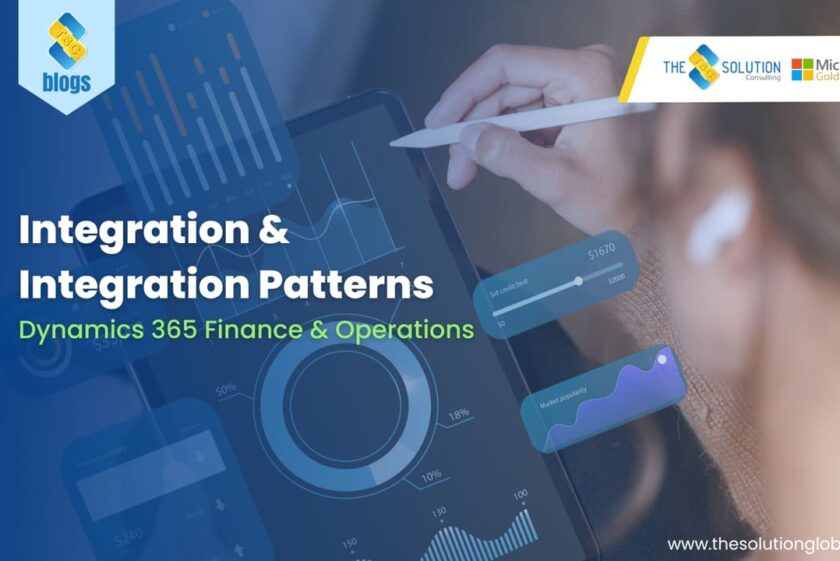
Integration & Integration Patterns for Microsoft Dynamics 365 Finance & Operations
As companies expand and develop, integrating their enterprise systems becomes crucial for maintaining efficiency and staying competitive. Microsoft Dynamics 365 Finance and Operations (F&O) is a powerful ERP solution that facilitates seamless integration with various systems, optimizing processes and improving business intelligence. Understanding and leveraging the right integration patterns can significantly impact the success of your integration projects. This article outlines key integration patterns for Dynamics 365 F&O and their benefits.
What are Integration Patterns?
Integration patterns are standardized methods or strategies used to connect different systems, applications, and data sources. These patterns provide a structured approach to integration, ensuring consistency, reliability, and scalability. For Dynamics 365 F&O, the right integration pattern can help achieve seamless data flow and operational harmony.
Key Integration Patterns for Dynamics 365 F&O
- Point-to-Point Integration
Point-to-point integration involves a direct connection between two systems, where data is transferred from one system to another without the involvement of any intermediary. This pattern is typically used for straightforward, simple integrations where only a few systems need to be connected.
Use Cases
- Duel write integration between Dynamics 365 F&O and a CRM system.
Advantages
- Easy to implement and maintain for simple scenarios.
- Low initial cost and quick setup.
Disadvantages
- Scalability issues as the number of integrated systems increases.
- Increased complexity and maintenance overhead with multiple point-to-point connections.
- Middleware-Based Integration
Middleware-Based integration uses a central hub (middleware) to manage communication and data exchange between different systems. The hub acts as an intermediary, directing data to and from Dynamics 365 F&O and other connected systems, simplifying the integration architecture by reducing the number of direct connections between systems.
Use Cases
- – Integrating multiple systems such as CRM, e-commerce platforms, and supply chain management solutions.
Advantages
- Simplifies integration architecture by reducing the number of direct connections.
- Centralized monitoring, control, and management of integrations.
Disadvantages
- Higher initial setup cost and complexity.
- Potential single point of failure at the hub.
- API-Led Integration
API-led integration leverages APIs to expose functionalities and data from Dynamics 365 F&O to other systems and vice versa. This pattern allows for real-time data exchange and interactions, enabling seamless integration and communication between systems.
Use Cases
- Real-time data exchange and interactions, such as syncing inventory data with an e-commerce platform.
Advantages
- Facilitates real-time data exchange and integration.
- Promotes reuse of APIs across different integration scenarios.
Disadvantages
- Requires robust API management and security measures.
- Initial setup can be complex and time-consuming.
- Event-Driven Integration
Event-driven integration is a pattern where systems communicate through events. When a specific event occurs in one system, it triggers actions or data exchanges in other connected systems. This pattern supports real-time responsiveness and decoupled architecture.
Microsoft Dynamics 365 F&O includes a preset collection of Business Events, which can be easily utilized for integration purposes.
Use Cases
- Real-time notifications and updates, such as updating order statuses or inventory levels.
Advantages
- Supports real-time data processing and responsiveness.
- Decouples systems, promoting flexibility and scalability.
Disadvantages
- Complexity in managing and orchestrating events.
- Requires robust event handling and monitoring mechanisms.
- File-Based Integration
File-based integration involves the exchange of data files between systems. Data is exported from one system into a file (such as CSV, XML, or JSON) and then imported into Dynamics 365 F&O or vice versa. This pattern is often used when real-time integration is not required.
Use Cases
- Host to Host integration with Bank and Microsoft Dynamics 365 F&O.
Advantages
- Simple to implement and requires minimal changes to existing.
- Can handle large volumes of data in batch mode.
Disadvantages
- Not suitable for real-time data exchange.
- Potential data latency and manual intervention required for file handling.
Choosing the Right Integration Pattern
Selecting the appropriate integration pattern for Dynamics 365 F&O depends on various factors, including:
- Business Requirements: Understand the specific needs and goals of your integration project.
- Complexity and Scale: Consider the number of systems to be integrated and the complexity of data exchanges.
- Budget and Resources: Evaluate the cost implications and resource availability for implementation and maintenance.
- Future Scalability: Ensure the chosen pattern can accommodate future growth and changes.
Integrating Microsoft Dynamics 365 Finance and Operations with other business systems is essential for achieving operational efficiency and business agility. By understanding and leveraging the right integration patterns, businesses can ensure seamless data flow, enhanced decision-making, and improved overall performance. Whether you opt for point-to-point, middle ware based, API-led, event-driven or File based integration, choosing the right pattern tailored to your needs is crucial for a successful integration journey.
Ready to optimize your business operations with Dynamics 365 F&O integration? Contact us today to discover the best integration strategy for your organization.


